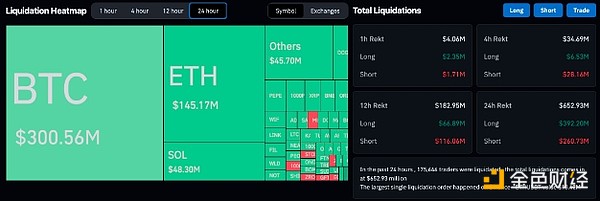Author: Alex O'Donnell, CoinTelegraph; Translated by: Deng Tong, Jinse Finance
On August 5, cryptocurrencies experienced their worst day in years. Few saw it coming, but traders’ addiction to leverage had quietly been amplifying market risk for months. If leveraged trading was the fuse, the sudden rise in the yen was the match. Fortunately, the fire may soon be out.
A surge in yen borrowing costs caused the crash. Now, as traders finally cut leverage and yen exposure, the market is set for a healthy rebound. If the broader market stabilizes — and it likely will — cryptocurrencies could soon stage a comeback.
Cheap borrowing
It is well known that cryptocurrency trading is not based on fundamentals. Prices are driven primarily by short-term institutional traders who profit from the volatility of cryptocurrencies. To increase returns, traders use leverage or borrow funds to double their positions - often in staggering amounts. Shortly before the crash, open interest (a measure of net borrowing) was close to $40 billion.
All that borrowed money has to come from somewhere. Lately, that place has been Japan. In 2022, U.S. Treasury rates rose above zero for the first time in years and have continued to climb. In Japan, rates remain rock-bottom. Trading firms profit from this—borrowing huge amounts of Japanese loans to finance trades in other markets at low cost.
It seemed like good timing. By 2023, the crypto bull run was in full swing. Leveraged trading (which can magnify gains or losses by 2x or more) brought rich rewards. Meanwhile, traders’ funding, denominated in yen, was virtually free.
That’s the essence of what’s known as the yen carry trade, and it’s not unique to cryptocurrencies. According to a report from ING Bank, yen-denominated loans to foreign borrowers could reach about $2 trillion by 2024, up more than 50% from two years ago.
The end of Japan's 17-year policy
Everything changed on July 31, when the Bank of Japan raised its short-term government bond rate from 0% to 0.25%. (Previously, the Bank of Japan raised rates from -0.1% in March for the first time in 17 years.) This seemingly innocuous move set off a chain of events that culminated in a Bitcoin crash.
Even traditional markets were hit hard, with the S&P 500 (US stock index) falling more than 5% on the day.
The catalyst was not Japan’s rate hike, but what happened afterwards: a surge in the yen in foreign exchange markets. (When domestic interest rates rise, currencies typically appreciate.) Starting July 31, the dollar-yen exchange rate fell from around 153 yen to the dollar to 145 yen. Suddenly, borrowing in yen became very expensive.
Whether due to margin calls from lenders or out of caution, traders began unloading billions of dollars in positions. Jump Trading’s dump of more than $370 million worth of ETH between July 24 and August 4 caused a stir but did not trigger a market downturn. At most, Jump exacerbated what was destined to be a historic sell-off.

Liquidation data for 24 hours on the night of August 4-5, 2024. Source: CoinGlass
In fact, according to data from CoinGlass, more than $1 billion in leveraged trading positions (representing hundreds of thousands of trades) were liquidated between August 4 and 5.
A strong comeback?
For some diseases, fever is the cure. Hopefully, that’s what’s happening in the market. Traders are being shaken out of risky leveraged positions and finally cutting back on huge yen-denominated loan debt. In crypto, net open interest now stands at $27 billion — down nearly $13 billion from before the crash.
Meanwhile, ING said USD/JPY may have run out of room to fall.
If all else fails, there’s always a rate cut. Japanese stocks fell about 12% on Aug. 5 — their biggest one-day drop since 1987. That could force the Bank of Japan to intervene and soften the blow for borrowers. There could also be some relief for the U.S., after a July report showed a sharp rise in unemployment.
In Japan, “if intervention works — now is the time,” said David Aspellh, senior portfolio manager at Mount Lucas Management. “Given recent U.S. data, it looks like the Fed will be more aggressive in cutting rates than was thought a few months ago.”
If that happens, then cryptocurrencies could rebound in late summer. Of course, the cryptocurrency market is unpredictable. If there is any lesson from all this, it is to think twice before making another leveraged trade.








